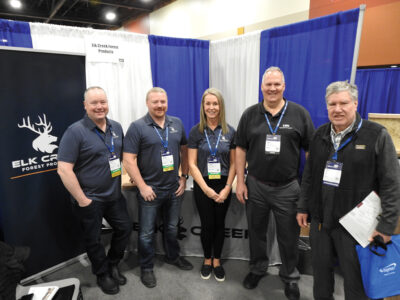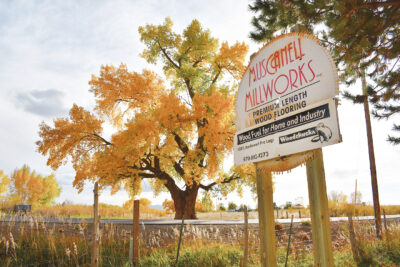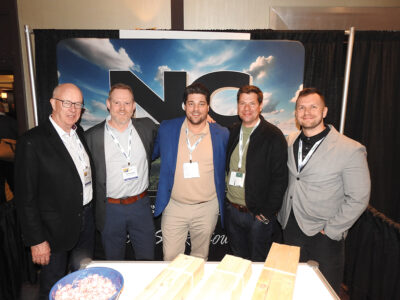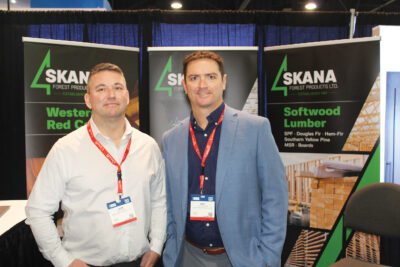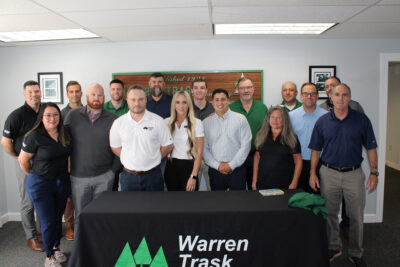
President & CEO of the American Wood Council
The world is catching on quickly to the fact that the built environment is a major contributor to greenhouse gas emissions, and there are some significant initiatives that have recently launched that will be critical in defining what policies and approaches are taken to reduce those emissions.
At Climate Week NYC last month, AWC attended a CEO Dialogue on Built Environment Transformation hosted by the World Business Council on Sustainable Development (WBCSD). At that event, the French Government announced plans for a first ever “Ministerial Forum on Buildings and Climate,” to be held March 7-8, 2024, in Paris. This event will bring together stakeholders from “governments, business, finance and civil society organizations, around a joint commitment and call to action to decarbonize the building sector and make it more resilient.”
At an all-day workshop attended by AWC and hosted by WBCSD the following day, we learned of another initiative, entitled “Built Environment Market Transformation,” which will be under the umbrella of the Global Alliance for Buildings and Construction (GlobalABC). This initiative will seek to develop “a clear vision of how to decarbonize the built environment and to drive a set of global actions that address the key barriers along the built environment value chain, co-developed and co-owned by all stakeholders, from business, finance as well as policy makers.” The WBCSD intends to roll out some initial activities related to this initiative at COP 28 in November.
Notably, closer to home, five organizations, including Architecture2030, Building Transparency, the Carbon Leadership Forum, the International Living Future Institute, and the U.S. Green Building Council, announced this month a new initiative entitled Embodied Carbon Harmonization and Optimization (ECHO) Project. The group will be focused on aligning embodied carbon reporting and will be drafting a set of “basic minimum requirements of a common framework for embodied carbon reporting, entitled the North American Minimum Project Embodied Carbon Reporting Framework V1.0.” The ECHO project is also contemplating development of a data reporting methodology to ensure consistency in the data provided for use in developing environmental product declarations and whole building life cycle assessments (WBLCA).
These, along with many other initiatives previewed at Greenbuild last month, are strong signals of the fact that reducing carbon in the built environment has become a mainstream priority for policymakers and the marketplace.
For those of us that attended Climate Week NYC and Greenbuild in September, it was clear that concrete and steel are heavily engaged in trying to improve their image as the leading cause of those emissions. They promise future emissions reductions and goals of net zero, and these efforts are being well-received. At the same time, wood products have been challenged to get the same level of attention and support, which as we all know, is hard to believe given wood products’ unique and remarkable sustainability story.
So, what do we do about it? How do we make sure that these initiatives provide a level playing field for wood products? AWC has certainly started to marshal our resources for such an effort, starting with collecting and providing quality, consistent data and Environmental Product Declarations through our Life Cycle Survey and Wood Sourcing Tool. AWC was recently awarded a Wood Innovations Grant to expand the database to include all wood product manufacturers, and we will be reaching out next year to seek robust participation. This data gives us the credibility to engage in meaningful conversations that can shape how wood products are credited for their carbon reducing benefits in WBLCA tools and in public policy agendas.
We also need to build stronger relationships with the technical experts and organizations developing the carbon accounting standards and tools that will dominate the field in the near future. AWC is heavily engaged on a number of standards developing approaches to measure embodied and stored carbon at the international and national levels. We have also worked closely with partner organizations like WoodWorks to build relationships with key groups like Building Transparency to ensure wood is getting fair treatment in carbon accounting tools. Wood requires a different approach than other competing materials, and we are starting to see a greater understanding of this thanks to our efforts to educate the technical experts working in this space.
Finally, we need to press for public policies that push our products to the front of the line as the “right now” solution to reducing the carbon footprint of the built environment. This means supporting initiatives such as the one that was recently announced by the U.S. Army Corps of Engineers, which requires Project Delivery Teams (PDT) to specifically consider mass timber solutions when designing Army MILCON and Civil Works vertical construction projects. We also need to support procurement policies that require WBLCA, as this ensures wood is considered at the design phase and cannot be ignored. General Services Administration (GSA), the federal government’s procurement office, has adopted WBLCA in its P100 sourcing document for all new projects, giving wood a fighting chance to break into areas historically dominated by competing materials.
AWC worked hard to achieve both of these policy wins, but there is much more to do and the number of emerging initiatives at the international and national levels is staggering. The stakes are too high for our industry not to be engaged, but in order to win the day, wood product manufacturing companies need to become more vocal in calling for changes that provide meaningful opportunities for our sector.
With concrete and steel promising future reductions on untested and unproven technologies, we provide an alternative that can make a real difference right now. We’ll need your help in providing data to our lifecycle database and joining us as we stake our claim and take our rightful place as the preferred sustainable building material in the marketplace.



